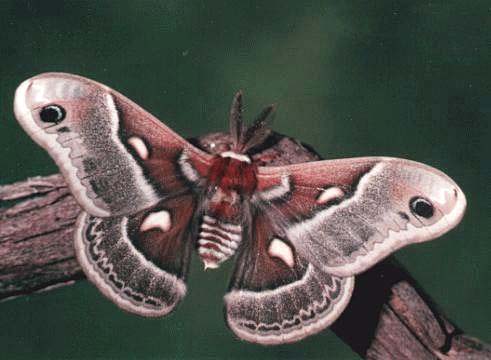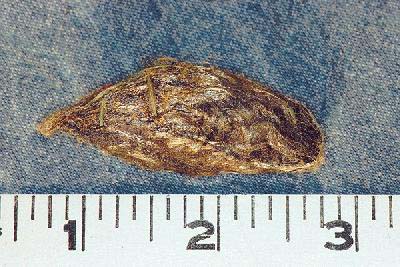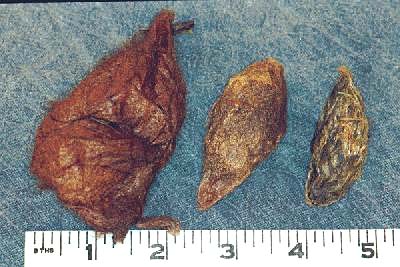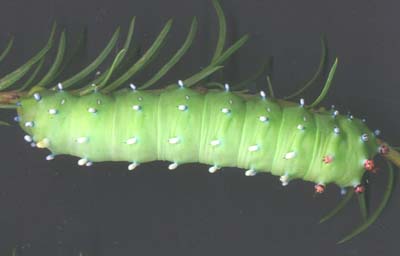The Columbia Moth
Hyalophora columbia columbia (S. I. Smith, 1865)

Photo Hyalophora columbia columbia moth courtesy of Leroy Simon.
This site has been created by
Bill Oehlke at oehlkew@islandtelecom.com
Comments, suggestions and/or additional information are welcomed by Bill.
Become a member of
THE WORLD's
LARGEST SATURNIIDAE SITE
Pictures, information, contests, prizes,
data base search engine, free cocoons, special member only privileges
| TAXONOMY:
Superfamily: Bombycoidea, Latreille, 1802
Family: Saturniidae, Boisduval, [1837] 1834
Subfamily: Saturniinae, Boisduval, [1837] 1834
Tribe: Attacini
Genus: Hyalophora, Duncan, 1841
| |
MIDI MUSIC
"The Rose"
copyright C. Odenkirk
MIDI CITY
ON.OFF
<bgsound src="rose.mid" LOOP=FOREVER>
|
DISTRIBUTION:The Columbia moth (Hyalophora columbia columbia) is found in
Nova Scotia, Prince Edward Island and New Brunswick, and in southern parts of Quebec, Ontario,
Manitoba, and British Columbia. In the U.S., these moths are found in the border states of
Maine, Michigan, Wisconsin and Minnesota.
To my knowledge, Hyalophora columbia columbia has not been previously reported on P.E.I., but I did
take four females at lights in Montague, P.E.I., on June 13 and 14, 1998, and also in
early June of 1999.
I have also watched wild males come in to calling females here on P.E.I.
between 5:00 and 6:00 am.
In the wild caterpillars of this species feed
almost exclusively on larch (Larix laricina)
Although quite
similar to cecropia in appearance, this species is smaller
and lacks the red banding in both the fore and hind wings typical of
cecropia.
FLIGHT TIMES:
Like all Hyalophora species, columbia columbia is univoltine and usually flies
from May to early June depending on spring time warmth.
I have seen female
moths at lights in coastal New Brunswick as late as mid July.
Female moths are taken at lights after 10:30 pm, but males, which also
come in to lights, are rarely
seen because they usually don't fly until just before dawn and will
fly away or be eaten by birds as the sun rises.
ECLOSION:

Photo by Dan MacKinnon for Bill Oehlke |
Adults usually emerge through a valved-cocoon in mid-morning and must hang to
inflate wings properly. However, I have had moths eclose at 3:30 pm and mate the following
morning.I am fascinated by the silver and gold
striations (resembling larch bark and dry needles) that caterpillars are able to weave into the
cocoons. |
SCENTING AND MATING:
Females "call" males from 3:30 am until dawn by emitting an airbourne
pheromone. The mated pair usually remain coupled until the following
evening. A recent expedition to Nova Scotia (1997) near the end of June
resulted in nine males being captured at four different light sources
over two nights.
None of the males were around at 1:30 am when I retired, and a tenth
flew away when the lights (mercury vapour and black) were checked
just prior to dawn.
On June 23, 2000 I actually watched wild males fly in to a caged female
in Valleyfield, P.E.I. where there is an abundance of larch. The female started calling shortly
after 5:00 am and males arrived within ten minutes.

Photo by Dan MacKinnon for Bill Oehlke |
Sometimes columbia columbia males will fly in to a female cecropia that is still calling just prior
to dawn, not having mated through the night.
Subsequent caterpillars, fed on larch, spin
the hybrid-type cocoon between the normal cecropia cocoon (left)
and the columbia columbia cocoon (right). Male adults from this cross
will be sexually viable,
but females will be sterile. |
Both males and females of the cecropia x columbia columbia hybrids emerged in June of
1998, looking very much like large columbia columbia. One male mated with a female cecropia
and ova hatched, June 26, and were be fed on larch. All larvae from this back cross
subsequently succombed to disease. A female hybrid scented and mated
but did not deposit any eggs. A subsequent dissection revealed no ova inside the body cavity.
For those who wish to rear this species, the smaller, lighter cocoons tend to be males
and they typically emerge two to three days before the females in the larger, heavier cocoons.
I overwinter columbia columbia cocoons in loosely lidded waxed cardboard boxes in my refigerator crisper.
No misting or freezing is required.
EGGS, LARVAE, COCOONS, AND PUPAE:
Female moths lay single eggs (sometimes a pair) near the base of the
larch needles. Incubation can take anywhere from 8-19 days,
depending on temperature.
Columbia columbia larvae are solitary
from time of emergence.
Columbia l columbia larvae are very similar to cecropia and
other Hyalophora species but may be distinguished by three pairs of enlarged red thoracic
tubercles. Cecropia have but two pairs of red-orange enlarged dorsal, thoracic scoli.
Scan of fifth instar larva on larch by Bill Oehlke. |  |
Cocoons are compact and usually woven longitudinally against a branch or trunk
from 6-15 feet above the ground. The cocoons have gold and silvery striations
resembling the larch bark. Pupae tend to have little room within a
smooth, denser inner cocoon.
Click on caterpillar to view a
large image and access a list of caterpillar food plants.
Click on notes to
view seasonal summaries on columbia columbia.
|
| Google is one of my favourite Search Engines and seems to offer the most
extensive listing of Saturniidae, Sphingidae and butterfly sites. Use your back arrow to return to this site after using the
Google search box to the left. Clicking on radio button to left of pei.sympatico.ca will limit your search to this site.
|
Google lists at least one site for each of the following Saturniidae genera:
Actias, Adelocephala, Adeloneivaia, Adelowalkeria, Adetomeris, Agapema, Aglia, Anisota, Antheraea,
Antherina, Antistathmoptera, Archaeoattacus, Argema, Arsenura, Athletes (need species), Attacus, Aurivillius,
Automerella, Automerina, Automeris, Bunaea, Bunaeopsis, Caio (need species), Caligula (need species), Callosamia,
Catocephala, Cinabra, Cirina (need species), Citheronia, Citioica, Coloradia, Copaxa, Copiopteryx,
Coscinocera, Cricula, Decachorda, Dirphia, Dirphiopsis, Dryocampa, Dysdaemonia, Eacles,
Eochroa, Epiphora, Eriogyna, Eubergia, Eudyaria, Eupackardia, Eustera, Gamelia, Gonimbrasia,
Goodia, Graellsia, Gynanisa, Heliconisa, Hemileuca, Heniocha, Holocerina, Homoeopteryx,
Hyalophora, Hylesia, Hyperchiria, Imbrasia, Ithomisa, Lemaireia, Leucanella, Lobobunaea,
Loepa, Lonomia, ludia, Melanocera, Micragone, Molippa, Neoris, Nudaurelia, Oiticella,
Opodiphthera, Ormiscodes, Orthogonioptilium, Othorene, Paradirphia, Perisomena,
Periphoba, Polythysana, Procitheronia, Pselaphelia, Pseudaphelia, Pseudantheraea,
Pseudautomeris, Pseudimbrasia, Pseudobunaea, Pseudodirphia, Psilopygida, Ptiloscola,
Rhescynthis, Rhodinia, Rohaniella, Rothschildia, Salassa (need species: lola), Samia, Saturnia, Schausiella,
Syssphinx, Tagoropsis, Titaea, Urota, Usta (need species:terpsichore), Vegetia.
Visit other websites maintained by Bill Oehlke:
 | 
Show appreciation for this site by clicking on flashing butterfly to the left.
The link will take you to a page with links to many insect sites. |





